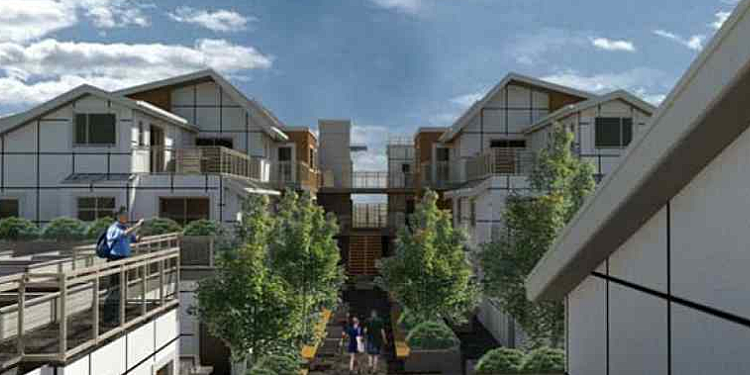Even with the slight moderation of Vancouver’s housing prices following the imposition of taxes on foreign buyers and empty homes, the stark reality is that average families can no longer afford to live here.
Double-income families with well-paid jobs can barely manage to find housing that meets their needs without the financial help of parents or other family members. The provincial government’s interest-free, down payment loans of up to $37,500 will help some. But the money may fuel a price rise and it does need to be repaid after five years by young families already saddled with record levels of debt.
Companies, universities, colleges, hospitals and school districts are finding it increasingly difficult to recruit people to fill jobs vacated by retiring baby boomers. Technology companies are delaying expansion because they can’t get employees.
The affordability crisis is also fraying the social fabric. In addition to neighbourhoods hollowed out by empty homes, Vancity Credit Union recently found that charitable giving has dropped 20 per cent in the past five years — 82 per cent of the 800 British Columbians surveyed said they reduced their donations because of increased living costs and reduced disposable income.
Radical change is needed, says Larry Beasley, Vancouver’s former co-director of planning. Small tweaks aren’t going to be enough nor will simply building more of the same be enough to solve this affordability crisis because it’s no longer just a matter of supply and demand any more.
If increasing supply were the answer, Vancouver wouldn’t have this problem because the city already has twice the density of Seattle. Even the suburbs are rapidly increasing their populations. Yet, prices continue to rise.
For both renters and buyers, prices are disconnected from the domestic economy. “World wealth” is out-competing “local wealth,” he says, and there’s no way that we can simply build our way out of the problem.
Beasley believes what’s needed is a third housing sector that would provide secure, affordable and stable housing for middle-income earners for generations to come. In order to preserve Vancouver’s livability and sustainability, he says it would need to account in the future for up 30 per cent of the city’s housing. And it would be in addition to the subsidized housing, which for decades has been the sole preoccupation of all levels of government.
A third sector would require “unprecedented public-private partnerships” involving governments, the philanthropic community, private developers and non-profit organizations.
This kind of third-sector co-operation is already being done in other cities where demand has priced locals out of the market. But there aren’t that many examples.
Beasley notes that some aren’t necessarily transportable. In Vienna, Hong Kong and Singapore much of the middle-income housing is owned by the government. That would likely be a tough sell here partly because of our deficit-conscious governments, but also because middle-class Canadians might not be comfortable with that idea.
Madrid has non-profit home ownership. It allows people to build up equity in their home, but it caps the resale price at a level considerably lower than the price escalation on freehold property.
Rotterdam has a non-profit housing corporation that uses its profits to underwrite construction of more housing.
In the Nordic countries, there is co-housing where extended families or even strangers may share space — everything from kitchens to living rooms to gardens. There are also neighbourhoods that have their own currencies and barter arrangements that allow people to trade good deeds for credits. By doing these things, people living in these micro-communities have cut their housing costs by as much as 40 per cent.
Closer to home, Whistler designates whole neighbourhoods where the buyers/owners must live and work in the community.
In Vancouver, some non-profit organizations are working on redeveloping their property to include affordable housing.
Meantime, there are some small measures that could help ease the situation. The city already provides bonuses for developers who build market housing. So, Beasley says, it could do the same for affordable housing or even make it mandatory for developers to build a percentage of units aimed at middle-income renters or buyers.
Creating a third sector aimed at preserving the livability and sustainability that so many Vancouverites have fought for and the very things that have made the city so attractive to others is going to take an incredible amount of creativity.
There’s no reason to believe it can’t or won’t happen. Vancouverism is already a thing — thanks to Beasley and others.

